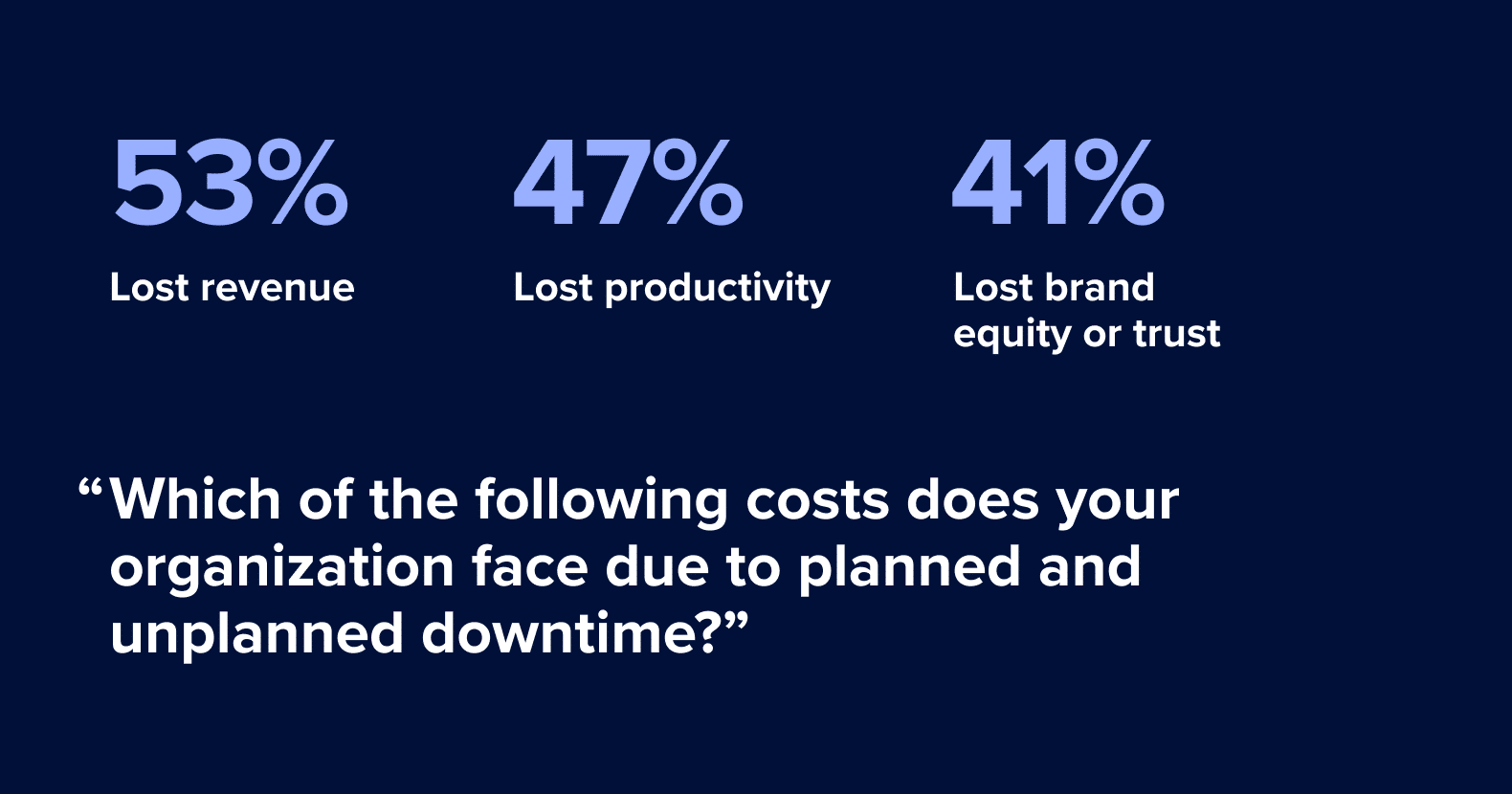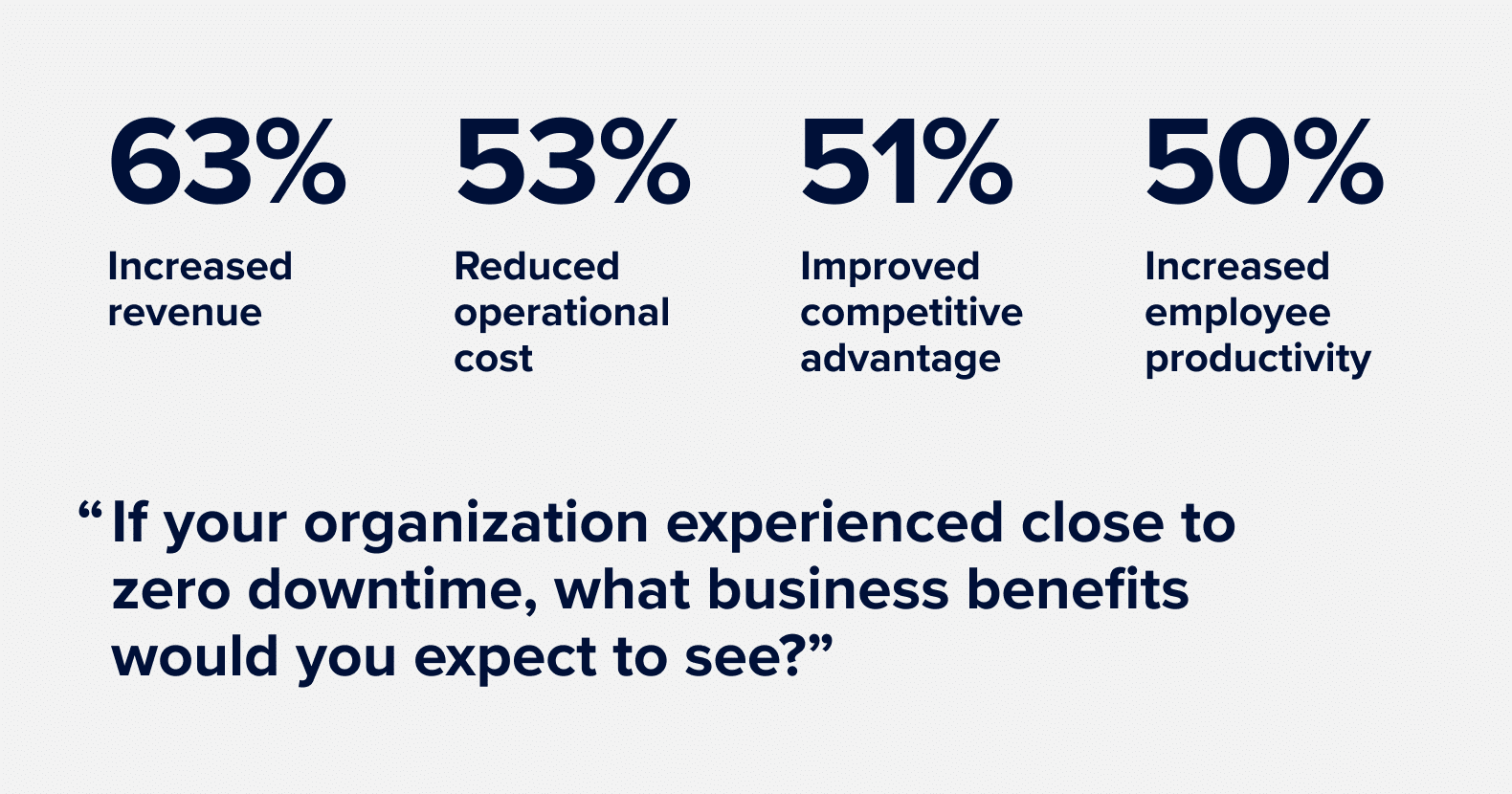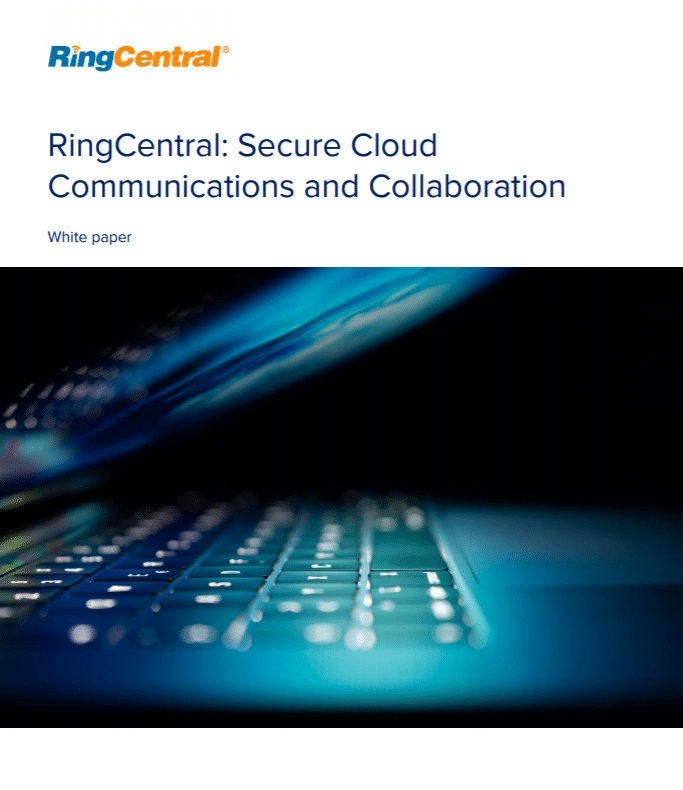Highlights:
- 59% of Fortune 500 companies experience at least 1.6 hours of downtime per week, which can cost up to $46 million per year.
- Planned and unplanned IT outages are significant costs to enterprises, with unplanned downtime costing up to 35% more than planned downtime.
- 99.999% availability is the gold standard for business-critical cloud services.

Learn all of the ins and outs of Microsoft Teams direct routing, including reliability, security, and different options.
Most of your work days go by smoothly. You turn on your computer, shoot off your morning emails, join your meetings, and type away at presentations or reports. And when there are no hiccups in your workflows, your IT people are happy. After all, when it comes to your network, no news is good news.
But at some point, you’ll inevitably face outages with your technologies. Maybe it’s a power outage, your internet, or even your entire PBX system. These unplanned outages can last minutes to hours and cause havoc among your IT teams.
Unplanned outages aren’t just IT issues, however. When you look at the big picture, unplanned outages affect your entire company’s productivity—especially if they happen during normal work hours.
According to one IBM Global Services study on large enterprises, the average revenue cost of an unplanned application outage was estimated at over $400,000 per hour. And 35% of those organizations experience it on a monthly basis. That’s a lot of productivity lost.

Let’s look at this from another angle. According to Dunn & Bradstreet, 59% of Fortune 500 companies experience a minimum of 1.6 hours of downtime per week.
To put this in perspective, assume that an average Fortune 500 company has 10,000 employees who are paid an average of $56 per hour, including benefits. Just the labor component of downtime costs would be $896,000 weekly to the company, which translates into more than $46 million per year.
Sure, this assumes that any downtime completely halts all operations. But even if the downtime only sidelined certain teams or specific tools, productivity (and revenue) are still lost.
What are the costs of downtime?
Estimating the cost of unplanned downtime can be tricky. Gartner estimates that, on average, IT downtime can cost organizations up to $5,600 per minute. Financial services, telecommunications, manufacturing, and energy industries are hit much harder too, with the highest rate of revenue loss during IT downtime.
Downtime can cost small businesses $423 per minute, whereas large organizations can lose over $9,000 per minute.
Of course, there’s no true way to put a number behind it. Downtime can cost small businesses $423 per minute, whereas large organizations can lose over $9,000 per minute.
Why such a large variance? The simple answer is that every business is unique. From employee headcount to on-premises hardware and IT security, these all factor into how downtime affects their operations.
Other costs of downtime
But companies of all sizes lose more than money for every outage they experience. Here are several other areas that suffer too:
1. Reputation and customer loyalty
The sales-per-hour numbers do not include the value of customer loyalty. To more accurately assess total lost sales, the impact percentage must be increased to reflect the lifetime value of customers who permanently move to a competitor.
If a large percentage of customers typically become very loyal after a satisfactory buying experience, the impact factor may significantly exceed 100%, possibly by a high multiple.
2. Human resources
Downtime cost results in lost employee productivity, which can be measured in terms of the salaries, wages, and benefits of idled people. After a downtime event, remedial actions are often required to repair the damage.
For example, employees might work overtime—at overtime rates—or temporary staff may be contracted to recover lost data and enter accumulated paper transactions.
Stay informed with RingCentral
3. Legal
Highly regulated industries like banking and finance, food, government, healthcare, and utilities must also factor in the potential losses related to litigation as well as civil penalties stemming from organizations’ failure to meet service level agreements (SLAs) or compliance regulations.
Moreover, for a select 3% of organizations, whose businesses are based on high-level data transactions like banks and stock exchanges, online retail sales, or even utility firms, losses may be calculated in millions of dollars per minute.
IT leaders must invest in solutions to reduce the impact
The overarching message is clear: downtime of even a few minutes is expensive and unwelcome.
Businesses must proactively work with their infrastructure and cloud vendors to ensure that their systems, applications, and networks come with the highest level of reliability. This is imperative as the industry moves to interconnected ecosystems.
In the IBM study cited below, 63% of IT leaders said that they expect their organization’s revenues to increase if they can achieve zero downtime.

Since the pandemic began, IT executives have faced major disruptions, and many are still uncertain about what IT will be like on the other side of the worldwide health crisis. That means using the lessons learned from this real-life stress test and the need for resiliency and flexibility to ride through them.
How can RingCentral help?
Five nines of reliability (99.999%) is the highest benchmark of availability for business-critical systems, networks, and software required by banking and other transaction-intensive industries. It’s also the uptime SLA we provide to every one of our customers.
How do we do this? Our data centers provide seven layers of failover redundancy that minimize service interruption in case of geographic outages or natural disasters. Our systems are also located in the same facilities as all major telecommunications carriers to maintain the fastest response times and interconnect services possible.

Your data is important to us. Here’s how we protect it.
In fact, RingCentral has delivered 10 consecutive quarters of 99.999% uptime SLA for our flagship product, RingCentral MVP™. Our data centers share hosted facilities space with some of the world’s largest internet companies and financial institutions. In addition, they’re in close physical proximity to the world’s top 20 internet exchange points and are co-located with all the major US telecommunications carriers to maintain the fastest response times and interconnect services possible.
Want to know more about our reliability? Check out our Trust Center.
Updated Jan 25, 2023












